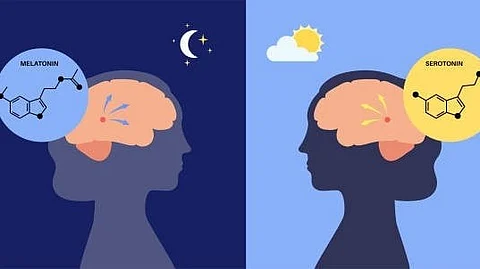Can Disrupted Rhythms Affect Health?
Yes. Changes in 12 hour rhythms have been linked to health problems. For example, in people with schizophrenia, brain tissue showed disrupted 12-hour gene patterns, especially in areas related to brain function and protein maintenance.
In mice, obesity and irregular eating can throw off these rhythms. Irregular eating patterns, chronic stress, and sleep deprivation may throw off these 12 hour rhythms, potentially impairing digestion, immunity, and even mood regulation. That means keeping these patterns stable might protect against metabolic issues, mental health disorders, and more.
Just as circadian medicine has helped treat sleep and hormone problems, understanding 12 hour cycles could lead to new ways to manage diseases.(3)
The Bottom Line
Twelve hour rhythms are an important layer of the body’s internal clock, helping to regulate key systems like energy use, immune response, and stress management. They might be older than we think, possibly dating back to our ocean-dwelling ancestors. Disruptions in these rhythms are linked to conditions like obesity and schizophrenia, so learning more about them could open new doors for personalized healthcare and disease prevention.
References:
Emery, P., Gachon, F. “Biological rhythms: Living your life, one half-day at a time”. npj Biol Timing Sleep, 2, 21 (2025). https://doi.org/10.1038/s44323-025-00037-1
Hafker, N. S. et al. “Rhythms and Clocks in Marine Organisms”. Ann. Rev. Mar. Sci. 15, 509–538 (2023). https://www.annualreviews.org/content/journals/10.1146/annurev-marine-030422-113038
Vijay Kumar Malesu, “Experts review how 12-hour biological cycles operate in mice, with clues in humans”, News Medical Lifesciences, Last modified on June 4, 2025.
https://www.news-medical.net/news/20250604/Experts-review-how-12-hour-biological-cycles-operate-in-mice-with-clues-in-humans.aspx#:~:text=The%20discovery%20of%2012-hour,than%20light%20or%20brain%20signals
(Rehash/Dr. Hansini Bhaskaran/MSM)


